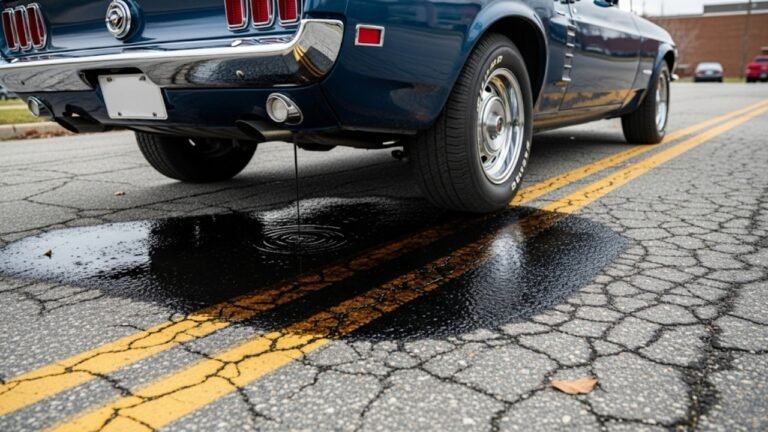How to Replace Oil in Car: A Simple Guide

Changing your car’s oil might seem like something only a mechanic should do. But trust me, it’s not rocket science. If you can make your morning coffee, you can do this too. I remember the first time I changed the oil in my car—it was messy, a bit confusing, but weirdly satisfying. And over time, it became a small ritual. Something I did to show my car a little love. In this article, I’ll walk you through how to replace Oil in Car, step by step, like we’re in the garage together.
You’ll learn how to get your hands a bit dirty and save a good chunk of change. More importantly, you’ll understand your car better. We’ll keep things simple, easy to read, and even easier to follow. Whether you drive a beat-up sedan or a newer model, this guide is your new best friend.
Why Changing Your Car’s Oil Matters More Than You Think

When you learn how to replace Oil in Car, you’re not just learning a task. You’re protecting your engine, extending your car’s life, and avoiding the shop fees that stack up like pancakes.
Here are a few signs your oil needs changing:
- Engine sounds louder than usual
- Oil on dipstick looks dark or dirty
- Dashboard oil light is on
- It’s been more than 5,000 miles since the last change
Think of oil like the lifeblood that keeps everything flowing smoothly. It cools, cleans, and protects. Skipping an oil change is like skipping water during a marathon—you won’t get far.
What You’ll Need: Your Basic Oil Change Kit
Before you start, gather your gear. Think of this like prepping for a small DIY project. Here’s what you need:
| Item | Why You Need It |
| New engine oil | Make sure it matches your car’s specs |
| New oil filter | Fresh filter = clean oil flow |
| Oil filter wrench | Helps remove the old filter |
| Socket wrench | To loosen the drain plug |
| Drain pan | Catches the old oil |
| Funnel | Prevents spills during refill |
| Gloves | Keeps your hands clean |
| Jack and stands | To lift the car safely |
| Old rags or towels | For cleanup |
When choosing engine oil, check your car manual. It’ll tell you exactly what kind you need—5W-30, 10W-40, etc. Don’t just grab any bottle off the shelf. The wrong oil can throw things off.
I always keep a small toolkit in my garage just for this. It makes the job feel less intimidating when everything’s ready. You don’t want to realize halfway through that you forgot the filter.
Step 1: Park, Cool Down, and Prep
Let your engine cool down before starting. Hot oil is no joke—it can burn you bad. Find a flat space, park your car, and set the handbrake. Then pop the hood.
Put on gloves, grab your tools, and position the drain pan under the oil plug. This is where the magic (and mess) begins.
If you’ve never crawled under your car before, don’t worry. It’s not as scary as it seems. Most oil plugs are easy to spot. They’re at the bottom of the oil pan, usually facing down or to the side.
Tip: Use a jack stand if your car is low. Don’t just rely on a jack—it’s not safe.
Step 2: Drain the Old Oil Like a Pro
Use the socket wrench to loosen the oil drain plug. It might take a little muscle, especially if it’s been a while. Once it’s loose, twist it by hand—and be ready. The oil will pour out fast.
Let it drain completely. This can take 5–10 minutes. While you wait, take a deep breath and feel proud. You’re doing real car maintenance. Not bad for a DIY Sunday.
Make sure the drain pan is directly under the plug, or you’ll be scrubbing your driveway later. Been there, done that.
After the oil stops dripping, wipe the plug clean with a rag and screw it back in tightly—but not too tight. Stripping threads is no fun.
Step 3: Remove the Old Oil Filter Without Swearing
This part can be tricky. The oil filter is often stuck on tight, especially if the last person who changed it over-tightened it. Use the oil filter wrench to loosen it. Once it’s moving, twist it off by hand.
Warning: It will be messy. Oil will spill out, and the filter will be full. Keep the drain pan underneath and have rags ready.
I always think of the oil filter like a coffee filter for your engine. It catches all the bad stuff. Replacing it means your new oil will stay cleaner for longer.
Before installing the new filter, take a finger and dip it in the new oil. Rub a little around the rubber gasket on the filter. It helps create a good seal.
Then, screw on the new filter by hand. Don’t use the wrench to tighten it—it only needs to be snug.
Step 4: Add the New Oil (Your Car Will Thank You)
Time to fill up. Place the funnel in the oil cap on top of the engine. Pour in the new oil slowly. Your car’s manual will tell you how much it needs. Usually, it’s between 4–5 quarts.
After pouring, replace the cap and wipe up any spills. Then start the engine and let it run for a minute. Turn it off, wait a couple of minutes, then check the dipstick. If it’s below the line, add a little more oil.
Pro Tip: Always check the oil level after running the engine. Some oil fills the filter, so your level might drop.
This part always makes me smile. There’s something satisfying about seeing fresh, golden oil in the engine. It feels like a mini victory.
Step 5: Clean Up and Recycle the Old Oil
Don’t just toss the old oil in the trash. That stuff is toxic. Pour it into a sealed container and take it to your local auto parts store—they’ll recycle it for free. Same with the old filter.
Clean your tools, wipe any oil spots, and make a note of the date and mileage. That way, you’ll know exactly when your next change is due.
How to replace Oil in Car isn’t just about pouring liquid. It’s about taking responsibility for your vehicle. About knowing that every time you start the engine, you did your part to keep it running smooth.
Tips for First-Time Oil Changers: Things I Wish I Knew
When I first decided to try how to replace Oil in Car by myself, I was nervous. YouTube videos made it look easy, but standing there with a wrench and a filter in hand felt different. So here’s what I wish someone had told me before my first oil change:
- Dress for the mess. Wear clothes you don’t mind ruining. Oil stains don’t come out.
- Work on a cool engine. If it’s hot, wait at least 30 minutes after turning off the car.
- Double-check the oil type. Don’t assume all cars use the same. Your manual knows best.
- Label your tools. Keep your oil kit tools in one spot. Saves time and stress later.
- Don’t overtighten. Both the drain plug and filter just need to be snug, not cranked tight.
Doing your first oil change can feel like learning to ride a bike. Wobbly at first, but after a few tries, it’s second nature. And honestly, there’s a weird confidence boost in knowing you can take care of your ride.
Common Mistakes to Avoid (So You Don’t Learn the Hard Way)
Let’s be real. Mistakes happen. I’ve made my fair share while learning how to replace Oil in Car. So here’s your cheat sheet to dodge the most common ones:
- Forgetting the drain plug. I’ve seen people pour in fresh oil… while the drain plug was still out. Goodbye, clean oil.
- Using the wrong filter. Some filters look similar but aren’t compatible. Always double-check the part number.
- Overfilling the oil. More is not better. Too much oil can cause pressure problems and damage seals.
- Leaving the old gasket behind. Sometimes the rubber ring on the old filter sticks to the engine. If you don’t remove it, you won’t get a proper seal.
- Not checking for leaks. After everything’s done, always check under the car for drips after running the engine.
I once over-tightened my oil filter so hard that it took me an hour to remove it next time. That was a learning moment—and a good reminder that gentle wins.
How Often Should You Change Your Oil, Really?
The short answer: It depends.
For older cars, every 3,000 miles was the golden rule. But most modern engines, especially when using synthetic oil, can go 5,000 to 7,500 miles—sometimes even 10,000.
But here’s what I do: I check my car’s manual and base my oil changes on that. It’s tailored to your engine’s needs. Plus, if you drive in tough conditions—lots of city traffic, extreme heat or cold, or short trips—you might need to change it more often.
Think of it like changing the filter in your house’s air conditioner. Wait too long, and everything has to work harder. Same deal here. Regular oil changes mean better fuel economy, smoother performance, and fewer engine issues long-term.
Did You Do It Right? Signs Your Oil Change Was Successful
So you’ve gone through all the steps, wiped the sweat off your brow, and started the engine. Here’s how to know you nailed it:
- The engine runs smoothly without strange noises
- Oil pressure light on the dashboard is off
- No oil leaks under the car after running the engine
- Oil level on dipstick is in the safe zone
Also, the oil should look amber-colored and clean—not black or gritty. If something feels off, like a rattle or burning smell, turn off the engine and double-check everything.
Once, I forgot to properly tighten the oil filter. It didn’t fall off, but it did leak. Caught it early, thankfully. Lesson? Take your time. Check your work. This isn’t a race.
Oil Change and the Seasons: What to Know
This might sound extra, but oil is like clothing—it should match the weather. That’s especially true if you live somewhere with extreme seasons.
- Winter: Thinner oil flows better in cold temps. Look for oil with a lower “W” number (like 5W-30).
- Summer: Thicker oil can handle the heat better. Higher numbers, like 10W-40, might be ideal for older engines in hot zones.
- All-season synthetics are great if you want one oil to rule them all. They adapt well to temperature swings.
I live in an area with cold winters, and I’ve noticed my car runs smoother when I use 5W-30 during those months. It starts easier in the morning, and the engine doesn’t strain as much.
What If You Mess Up? Don’t Panic
Here’s the truth: how to replace Oil in Car is a simple process, but it’s not fail-proof. If you spill oil, strip a thread, or use the wrong filter—it’s okay. The important part is that you tried, and you learned.
Most mistakes are fixable:
- Spilled oil? Clean it up with cat litter or oil absorbent.
- Wrong filter? Don’t start the engine. Just remove and replace.
- Overfilled? Drain a little bit out using the drain plug.
- Forgot a step? Go back and do it—don’t drive until you’ve checked it all.
There’s no shame in learning by doing. Every seasoned DIYer has a story. Mine includes a wrench flying across the garage because I couldn’t loosen the filter. Hey, it happens.
Final Checklist Before You Hit the Road
Before you pat yourself on the back and take a victory lap, run through this final list:
- Old oil is drained
- New filter installed and gasket oiled
- Drain plug tightened (but not overdone)
- Correct oil added (and dipstick level is good)
- Oil cap replaced
- No leaks under the car
- Tools and rags cleaned
- Old oil properly stored for recycling
- Mileage recorded
If you ticked all these off, you did it. You just nailed how to replace Oil in Car—by yourself, with your own two hands.
Parting Thoughts: From One Driver to Another
Learning how to replace Oil in Car is one of those adulting moments that makes you feel more in control. You understand your machine better. You save money. And most of all, you know what’s going into your car.
It’s not about being a car expert. It’s about being a confident car owner. Like making your own coffee instead of buying it every day. Small task, big difference.
And if you mess up? You’ll be fine. Every oil change is a small act of care, a small lesson in independence. So next time someone asks if you know how to change your oil, you won’t just say yes—you’ll have the hands-on experience to prove it.






